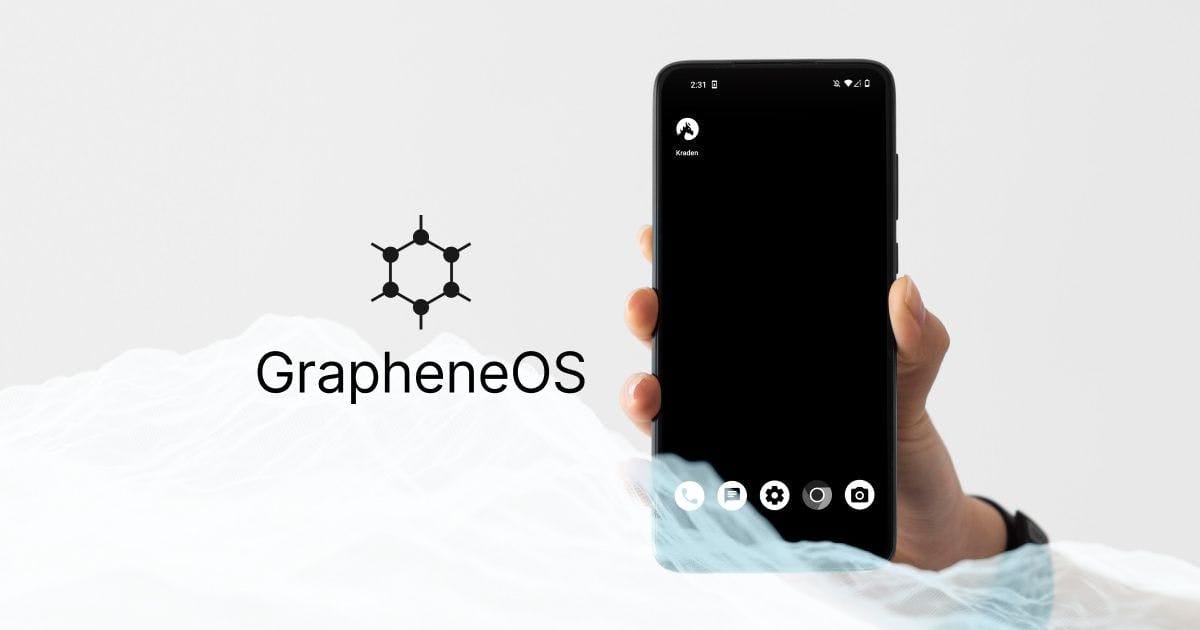
Evan Walsh

GrapheneOS: The Privacy-Focused Android Alternative That Raises the Bar for Security
In an age where smartphones have become extensions of ourselves—holding everything from our communications and photos to sensitive personal and financial data—the operating system powering these devices has never been more critical. For those who prioritize security, privacy, and control, GrapheneOS is emerging as the gold standard in mobile operating systems.
This blog post delves deep into what GrapheneOS is, how it works, who it’s for, and how it compares to other mobile operating systems.
What Is GrapheneOS?
GrapheneOS is an open-source, security and privacy-focused mobile operating system based on AOSP (Android Open Source Project). Developed independently, it offers a hardened version of Android without Google’s proprietary apps and services—unless you opt in.
GrapheneOS is currently available for select Google Pixel devices, which are uniquely suited due to their security hardware (Titan M2) and ongoing support for firmware and kernel updates.
Key Features of GrapheneOS
1. Security Hardening
GrapheneOS introduces numerous low-level and high-level security improvements over standard Android:
• Enhanced memory safety with tighter compiler-based mitigations.
• Hardened libc, the C standard library used in Android.
• Stronger sandboxing and isolation for apps and services.
• Improved kernel hardening, using features like Control Flow Integrity (CFI) and hardened usercopy protections.
These changes reduce the potential attack surface and make exploitation significantly more difficult.
2. Privacy by Default
Unlike stock Android, GrapheneOS doesn’t include proprietary Google services or apps. However, it allows sandboxed Google Play Services, meaning you can install Google apps like Play Store or YouTube in a way that isolates them from the rest of the system, minimizing data leakage.
Other privacy features include:
• Per-app network access control.
• Sensor permission toggles (camera, microphone).
• Scoped storage enforcement to prevent broad file access.
• No persistent device identifiers exposed to apps.
3. Secure App Deployment
GrapheneOS supports installing apps via:
• The Aurora Store, which lets users anonymously download apps from the Google Play Store.
• F-Droid, a catalog of open-source apps.
• Direct APK installation, with strict permission checks.
4. Vanadium Browser
A hardened fork of Chromium with extensive privacy and security tweaks, Vanadium is the default browser and WebView implementation, offering much stronger protection against common browser exploits and fingerprinting.
5. Auditability & Transparency
Being fully open-source and reproducible, GrapheneOS can be audited by anyone. This transparency is crucial for trust, especially in a space where even the operating system itself could potentially betray user data.
Who Is GrapheneOS For?
GrapheneOS isn’t for everyone. It's aimed at:
• Privacy enthusiasts who want to escape the pervasive tracking of big tech.
• Security professionals and journalists who need a hardened mobile environment.
• Developers and ethical hackers seeking a baseline of trust and transparency.
• Activists and dissidents needing strong defenses against surveillance.
However, it’s increasingly usable for general tech-savvy users who don’t mind a slightly steeper learning curve.
GrapheneOS vs. Other Android ROMs
| Feature | GrapheneOS | LineageOS | CalyxOS |
|---|---|---|---|
| Base | AOSP | AOSP | AOSP |
| Google-free by default | ✅ | ✅ | ✅ |
| Sandboxed Play Services | ✅ (Optional) | ❌ | ✅ |
| Security Hardening | ✅✅✅ | ✅ | ✅✅ |
| Device Support | Pixel only | Many | Pixel (few models) |
| Target Audience | Privacy/security-focused | General open-source users | Privacy-focused, user-friendly |
While LineageOS is more flexible and supports a wide range of devices, it lacks the deep security hardening of GrapheneOS. CalyxOS offers a more user-friendly experience and is a good middle ground but doesn’t go as far as GrapheneOS in terms of technical defenses.
How to Install GrapheneOS
GrapheneOS has one of the most straightforward installation experiences among custom ROMs, thanks to its web-based installer:
1. Visit GrapheneOS on a Chromium-based browser.
2. Connect your supported Pixel device via USB.
3. Follow the guided steps, which include unlocking the bootloader, flashing the OS, and re-locking the bootloader.
The project offers detailed instructions, and the process typically takes under 30 minutes.
How to Install GrapheneOS
While you can use GrapheneOS without Google entirely, many users opt to install sandboxed Play Services inside a secondary user profile. This provides compatibility with mainstream apps without compromising privacy in your main profile.
You can also use:
• Signal, for encrypted messaging.
• Element (Matrix), for decentralized chat.
• Proton Mail/VPN, for secure communications.
• NewPipe, an open-source YouTube front-end.
The Future of GrapheneOS
GrapheneOS is still a relatively niche project, but its influence is growing. As concerns about mobile surveillance, government overreach, and corporate tracking intensify, tools like GrapheneOS become critical in defending digital freedom.
The developers maintain a strong focus on long-term sustainability, resisting feature bloat and sticking to core principles: security, privacy, and usability.
Final Thoughts
GrapheneOS isn’t just another Android ROM—it’s a rethink of the mobile OS paradigm, prioritizing user agency in a space dominated by surveillance capitalism. For those willing to make small sacrifices in convenience for a significant boost in security and privacy, GrapheneOS is arguably the best choice available today.
If you’re serious about reclaiming control of your smartphone, GrapheneOS deserves your attention.